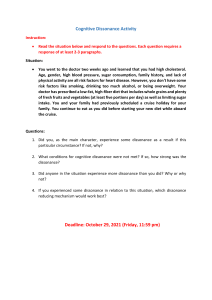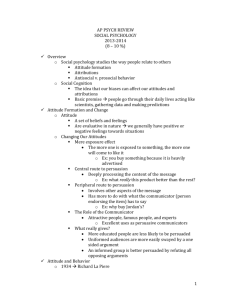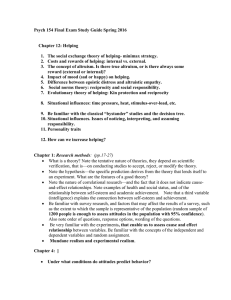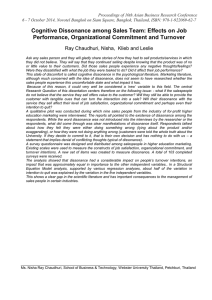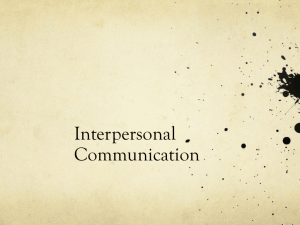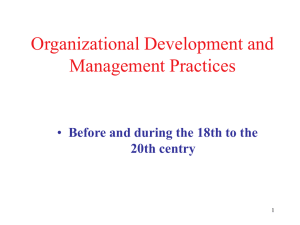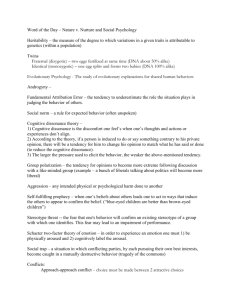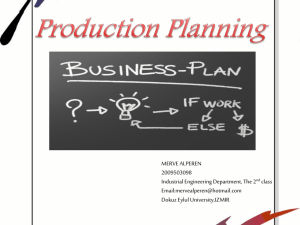Social Psych 1
advertisement
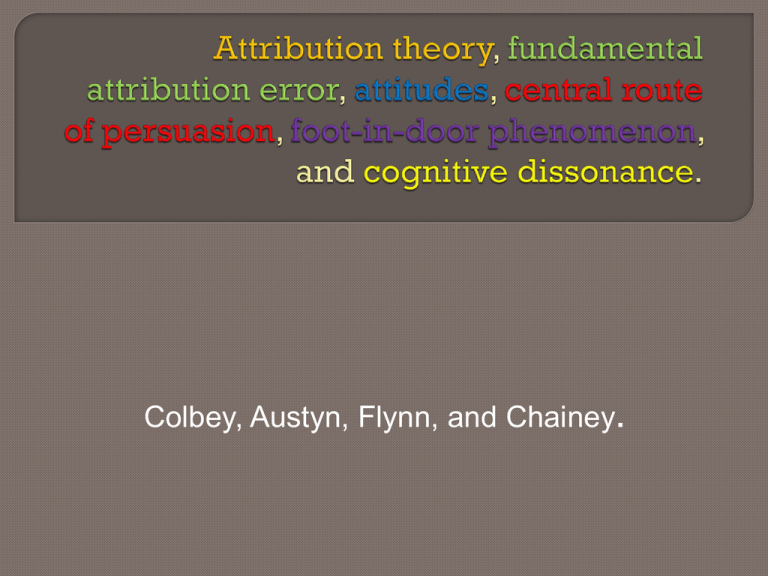
Colbey, Austyn, Flynn, and Chainey. Explanations that people tend to make to explain successes or failures. Can be analyzed with 3 sets of characteristics -Internal vs. External -Stable vs. Unstable -Controllable vs. Uncontrollable People will interpret their environment in such a way as to maintain a positive self-image. •The tendency for an observer, when interpreting and explaining the behavior of another person, to underestimate the situation and to overestimate the personal disposition •Personal disposition is… Enduring systems of beliefs that can be examined on three different levels: -Cognitive -Emotional -Behavioral Environment, peers, media, operant and classical conditioning all influence our attitudes. A way of being persuaded, by the arguments or actual content of the message. As opposed to the peripheral route which is being persuaded by superficial cues (attractiveness or sound of voice) Example: After watching a political debate you decide to vote for a candidate because you agree with their opinions as opposed to voting for them because they are attractive. People’s tendency to comply more readily with a large request if they have already agreed to a smaller favor Example: a door-to-door solicitor can first ask a person to sign a petition then return a few weeks later and ask the person to make a donation Cognitive dissonance theory suggests that we have an inner drive to hold all our attitudes and beliefs in harmony and avoid disharmony (dissonance) Example: You don’t like to lie but you are forced to lie for a friend In order to avoid this, some people adapt by changing their attitude, the behavior, or creating a new cognition.
